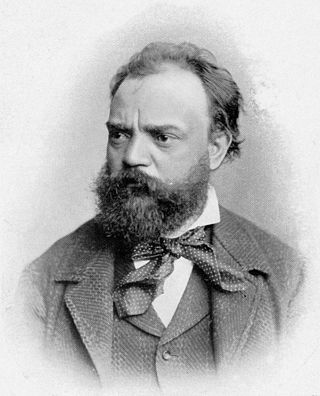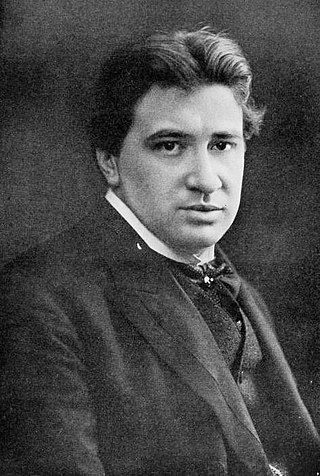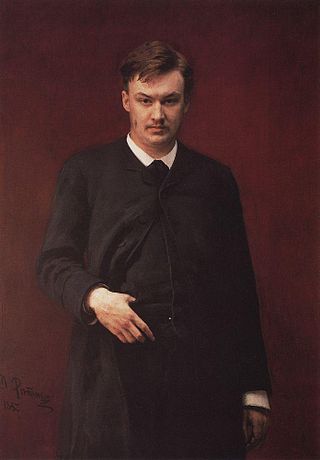
Dmitri Dmitriyevich Shostakovich was a Soviet-era Russian composer and pianist who became internationally known after the premiere of his First Symphony in 1926 and was regarded throughout his life as a major composer.

Sergei Sergeyevich Prokofiev was a Russian composer, pianist, and conductor who later worked in the Soviet Union. As the creator of acknowledged masterpieces across numerous music genres, he is regarded as one of the major composers of the 20th century. His works include such widely heard pieces as the March from The Love for Three Oranges, the suite Lieutenant Kijé, the ballet Romeo and Juliet—from which "Dance of the Knights" is taken—and Peter and the Wolf. Of the established forms and genres in which he worked, he created—excluding juvenilia—seven completed operas, seven symphonies, eight ballets, five piano concertos, two violin concertos, a cello concerto, a symphony-concerto for cello and orchestra, and nine completed piano sonatas.

The term string quartet can refer to either a type of musical composition or a group of four people who play them. Many composers from the mid-18th century onwards wrote string quartets. The associated musical ensemble consists of two violinists, a violist, and a cellist.

Antonín Leopold Dvořák was a Czech composer. Dvořák frequently employed rhythms and other aspects of the folk music of Moravia and his native Bohemia, following the Romantic-era nationalist example of his predecessor Bedřich Smetana. Dvořák's style has been described as "the fullest recreation of a national idiom with that of the symphonic tradition, absorbing folk influences and finding effective ways of using them".

Ermanno Wolf-Ferrari was an Italian composer and teacher. He is best known for his comic operas such as Il segreto di Susanna (1909). A number of his works were based on plays by Carlo Goldoni, including Le donne curiose (1903), I quatro rusteghi (1906) and Il campiello (1936).

Alexander Konstantinovich Glazunov was a Russian composer, music teacher, and conductor of the late Russian Romantic period. He was director of the Saint Petersburg Conservatory between 1905 and 1928 and was instrumental in the reorganization of the institute into the Petrograd Conservatory, then the Leningrad Conservatory, following the Bolshevik Revolution. He continued as head of the Conservatory until 1930, though he had left the Soviet Union in 1928 and did not return. The best-known student under his tenure during the early Soviet years was Dmitri Shostakovich.

Eugène-Auguste Ysaÿe was a Belgian virtuoso violinist, composer, and conductor. He was regarded as "The King of the Violin", or, as Nathan Milstein put it, the "tsar".

Antiformalist Rayok, also known as Learner's Manual, without opus number, is a satirical cantata for four voices, chorus, and piano by Dmitri Shostakovich. It is subtitled As an aid to students: the struggle of the realistic and formalistic directions in music. It satirizes the conferences that resulted from the Zhdanov decree of 1948 and the anti-formalism campaign in Soviet arts which followed it.

Nikolai Yakovlevich Myaskovsky or Miaskovsky or Miaskowsky, was a Russian and Soviet composer. He is sometimes referred to as the "Father of the Soviet Symphony". Myaskovsky was awarded the Stalin Prize five times.

Alexander Tikhonovich Gretchaninov was a Russian Romantic composer.

Vissarion Yakovlevich Shebalin was a Soviet composer.

Salomon Jadassohn was a German pianist, composer and a renowned teacher of piano and composition at the Leipzig Conservatory.

The Piano Trio No. 2 in E minor, Op. 67, is a piece for violin, cello and piano by the Russian composer Dmitri Shostakovich, started in late 1943 and completed in August the following year. It was premiered on 14 November 1944. The piece was dedicated to his close friend Ivan Sollertinsky, whose death in February 1944 affected Shostakovich profoundly.
Georgy Lvovich Catoire was a Russian composer of French heritage.

Piano Concerto No. 2 in F major, Op. 102, by Dmitri Shostakovich was composed in 1957 for the 19th birthday of his son Maxim, who premiered the piece during his graduation concert at the Moscow Conservatory. It contains many similar elements to Shostakovich's Concertino for Two Pianos: both works were written to be accessible for developing young pianists. It is an uncharacteristically cheerful piece, much more so than most of Shostakovich's works.

Franciszek Zachara (b Tarnów, Austrian Poland (now Poland), 10 December 1898; d Tallahassee, Florida, United States, 2 February 1966) was a Polish pianist and composer who concertized extensively throughout Europe in the years leading up to 1928. He was a professor of piano at a Polish conservatory from 1922–1928, and two American colleges from around this time until his death in 1966. Zachara composed well over 150 works, including many works for piano solo, a piano concerto, a symphony, several works for band, and various chamber pieces. The archive of his manuscripts is held at the Warren D. Allen Music Library at Florida State University. Most of these manuscripts are originals (or copies) from the composer's own hand.

Maximilian Osseyevich Steinberg was a Russian composer of classical music.

Revol Samuilovich Bunin was a Russian composer.

The Three Fantastic Dances, Op. 5 are a set of three piano pieces composed by Dmitri Shostakovich while he was a student at the Petrograd Conservatory. They are dedicated to Iosif Shvarts, a friend and fellow pupil in the piano class of Leonid Nikolayev.
Scherzo in F-sharp minor is a piece for orchestra written by Dmitri Shostakovich (1906–1975). Shostakovich was a Russian composer and pianist during the Soviet era. It was most likely written in 1921 or 1922 while Shostakovich was studying at the Petrograd Conservatory under Maximilian Steinberg. The composition is one of the composer's earliest surviving works. Originally written as a single movement of a piano sonata, the Scherzo was later orchestrated with assistance from Steinberg and became an orchestral work in its own right.
















